Here are lists of various aquatic plant example across the globe with its characteristics and uses to mankind. They are unique, colorful and provides an ecosystem for the aquatic living beings
Some of the aquatic plant example are as follows
- Water lilies
- Nelumbo nucifera
- Water lettuce
- Anubias barteri
- Water hyacinth
- Golden Pothos
- Water Chestnut
- Water Stargrass
- Lotus
- Moneywort
- Hornwort
- Rotala Rotundifolia
- Pygmy Chain Sword
- Indian Waterweed
- Crytopcoryne Wendtii
- Anubia Nana
- Java Fern
- Amazon Sword
- Java Moss
- Creeping Jenny Pond Plants
- Pickerel Plant
Water lillies–
Nymphaeceae is a family of flowering plants known as water lillies. They live as aquatic herbs in temperate climate. They have large flowers and unusual multiple parts, have vascular bundles in the stem. It does not have surface leaves during winter. The bulb and root of the plant is used for the treatment of diarrhea and infections in vagina, throat and mouth.
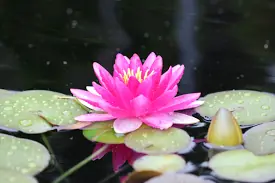
Nelumbo nucifera–
It is commonly known as Indian Lotus is an extinct species of Nelumbonaceae. These plants grow in flooded plains especially in deltas. It has wide variety from northern to central India. Thousands and thousands of lotus blooms under the water bodies. The rhizomes of lotus are consumed among the Asian countries like China, Japan, India etc. It is the national flower for India and Vietnam.

Water lettuce–
Pistia is a genus of genus of aquatic plants in the daisy family Araceae. The single species often called water cabbage, water lettuce, Nile cabbage or shellflower. It was first discovered from the Nile near Lake Victoria in Africa. It floats on the surface of the water and the roots are submersed beneath. The leaves are 2-15 cm long and are light green in colour. It is rich in calcium oxalate crystals inducing diseases like kidney stones; it is bitter in taste. It is used to feed ducks and pigs. It also helps to remove allergic conjunctivitis.

Anubias barteri–
It is an aquatic plant originating from the daisy family Araceae. They have broad dark green leaves of different shapes. It is easy to thrive since not many fish eat these species and it absorbs less sunlight. It is mainly used as the aquarium plant usually attached to rocks or bogwood. They should be placed in the shaded regions otherwise algae will develop.
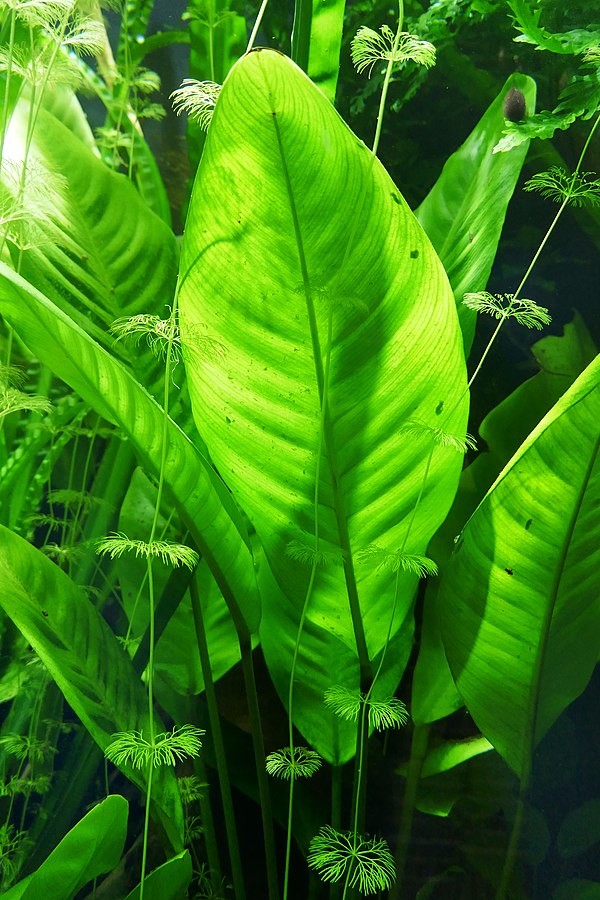
Water hyacinth–
Pontederia crassipes is a floating aquatic plant found in waterbodies across the world. These species blocks sunlight resulting in oxygen imbalance in the aquatic ecosystem. It creates a favorable environment for the production of snails and mosquito. The leaves are thick, ovalate in shape and rises above the water surface as high as 1 metre. The stems are floating and have bulb like nodules at the base. The plant is abundant in nitrogen so it is the substrate of biogas production and the sludge formed is for the biogas. It is the braiding material for fibres and the dried fibres are used to make hats, footwear, wreaths, bags etc.
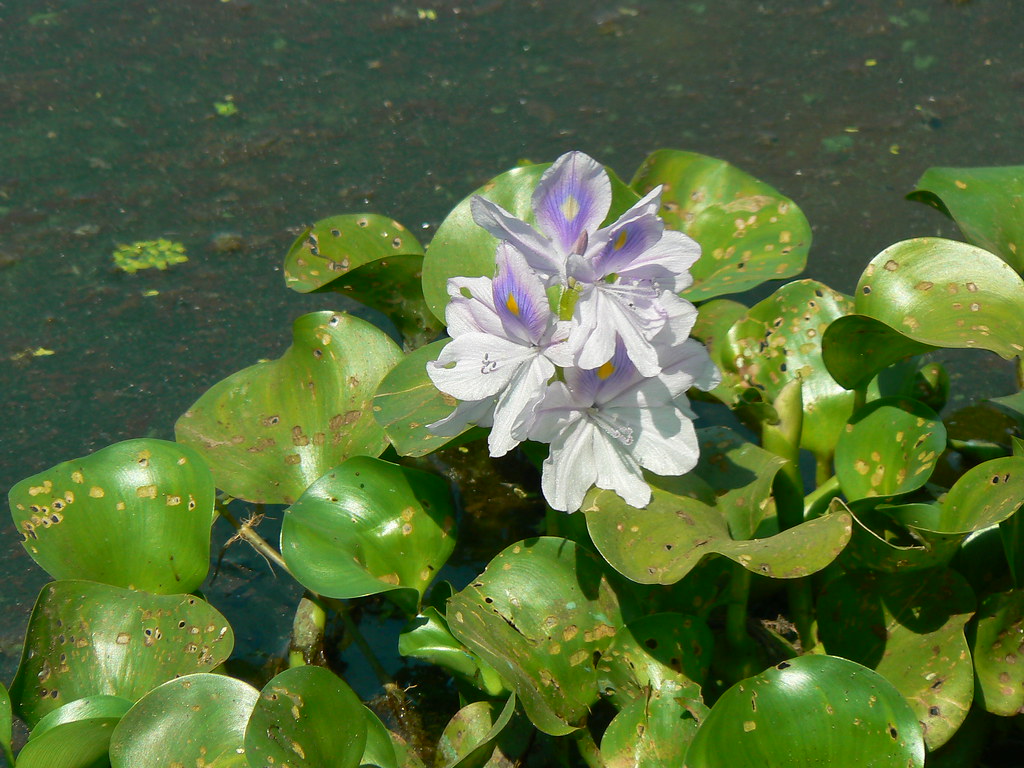
Golden Pothos–
Epipremnum aureum is a species from the family Araceae. It is a popular houseplant in temperate and sub- tropical regions. The leaves are alternate and heart shaped. The stems are trailing and the leaves gave a height of 4 inches. It is mainly kept in offices, shops and other public locations to beautify the ambience.
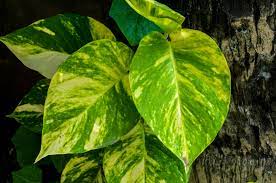
Water Chestnut–
Water Chestnut(Eleocharis dulcis) is a grass-like sedge native to Asia, Africa etc. It grows in marshes under water and in the mud. It has stem like tubular green leaves up to a height of 5 ft. They are used as a popular side dish among the Chinese. This plant reduces the affect of chronic diseases.
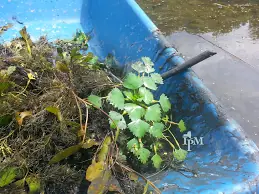
Water Stargrass–
Heterenthia dubia is an aquatic species native to North and Central America. The leaves have different morphology among species, it has a short- lived flower that blooms in morning and wills in the night. It is a food material by the fish and other aquatic animals. After the death of aquatic animals it serves a mode of nutrition to aquatic invertebrates.
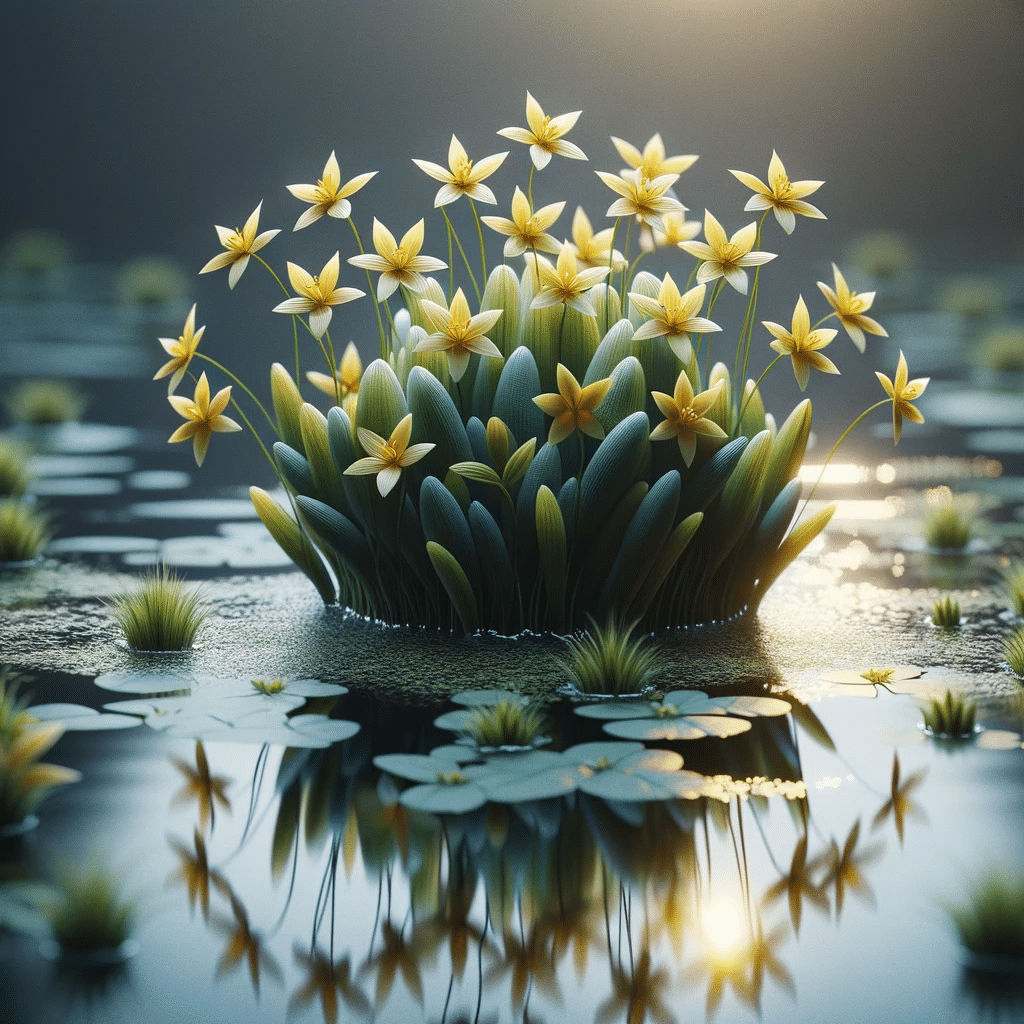
Lotus-
It is the national flower of India and Vietnam. It has large pink blossom.
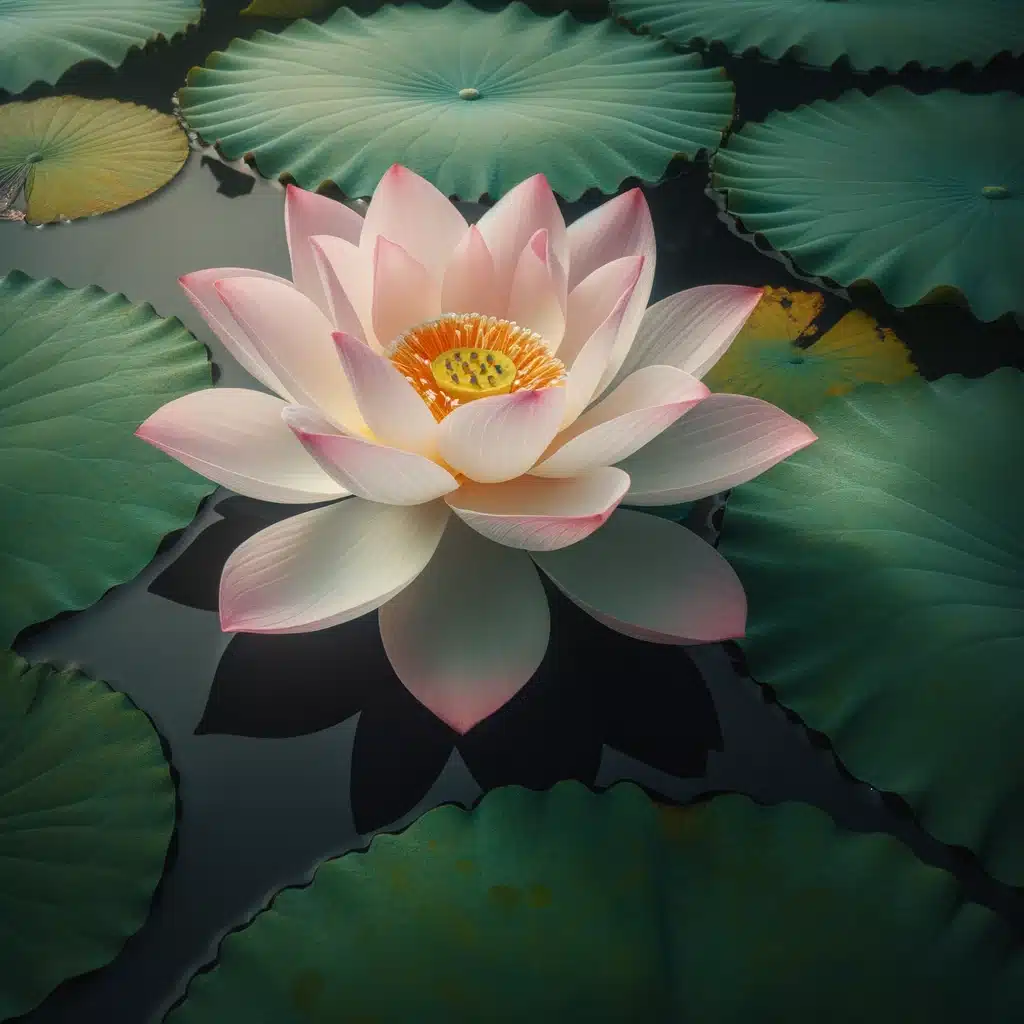
Moneywort–
It is an evergreen perennial plant from the family Primulaceae. It possesses a height of 2 inches and has rapidly indefinitely growing stems. It is a hardy plant which can survive low temperatures like -15 degrees Celsius.
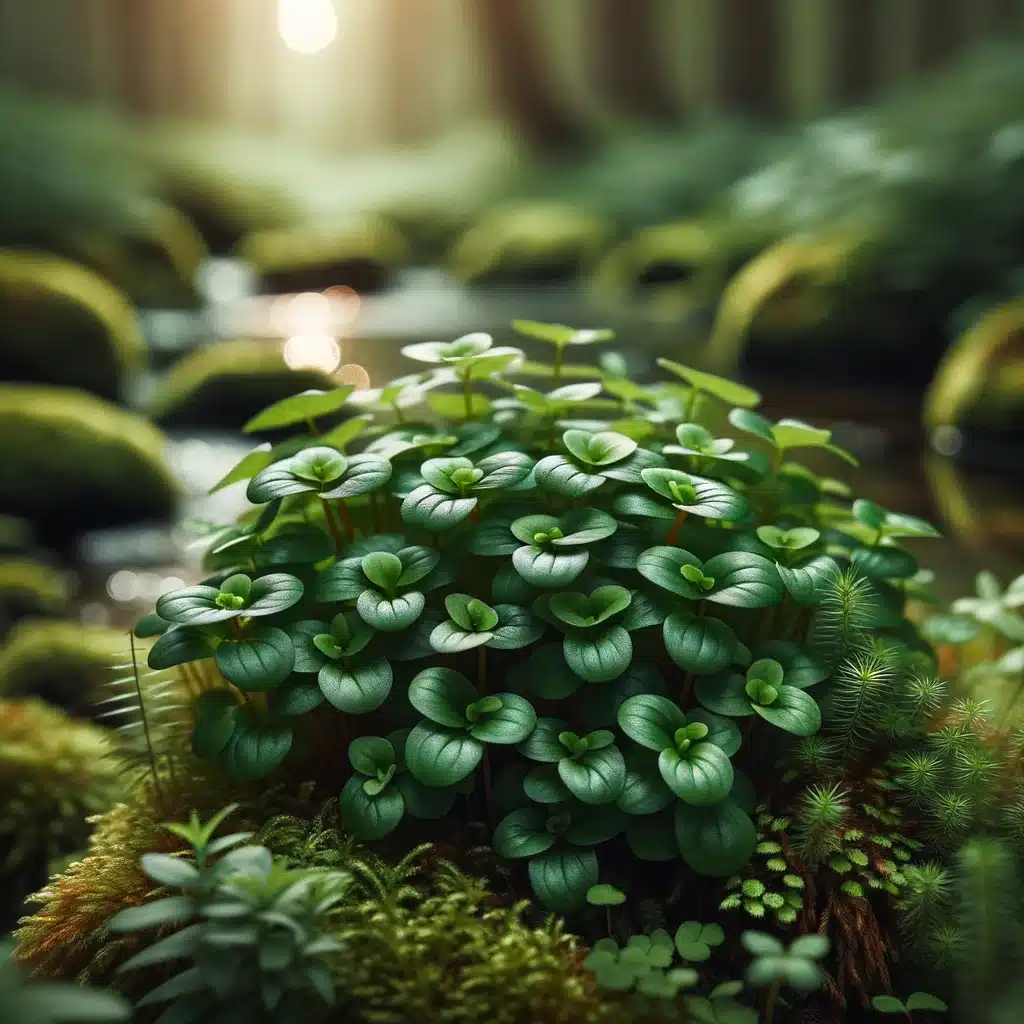
Hornwort–
It is a submerged free-floating aquatic plant. It has the height of the stem that reach lengths of 1-3 metre with numerous side shoots. The leaves are found collectively in a whorl of six to twelve at a time. The flower petals have colour of greenish brown. It is used as a natural supplement to a man- made water filter for an aquarium.
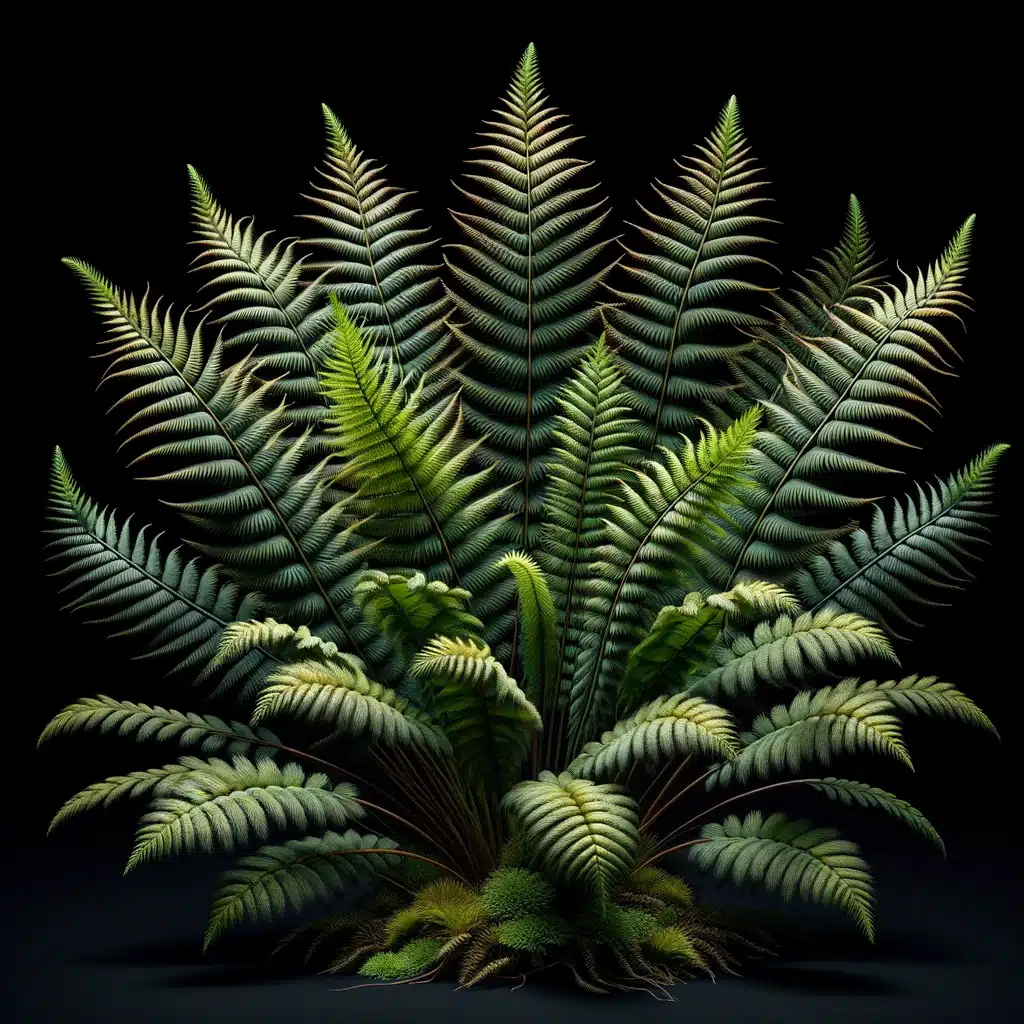
Rotala Rotundifolia–
It is common weed in wet places in India, China, Taiwan Thailand, Vietnam etc. They have both rounded and narrow leaves depending upon the light and environmental conditions. The flowers are of pale pink colour. It has anti-pyretic, anti-swelling and detoxication properties.
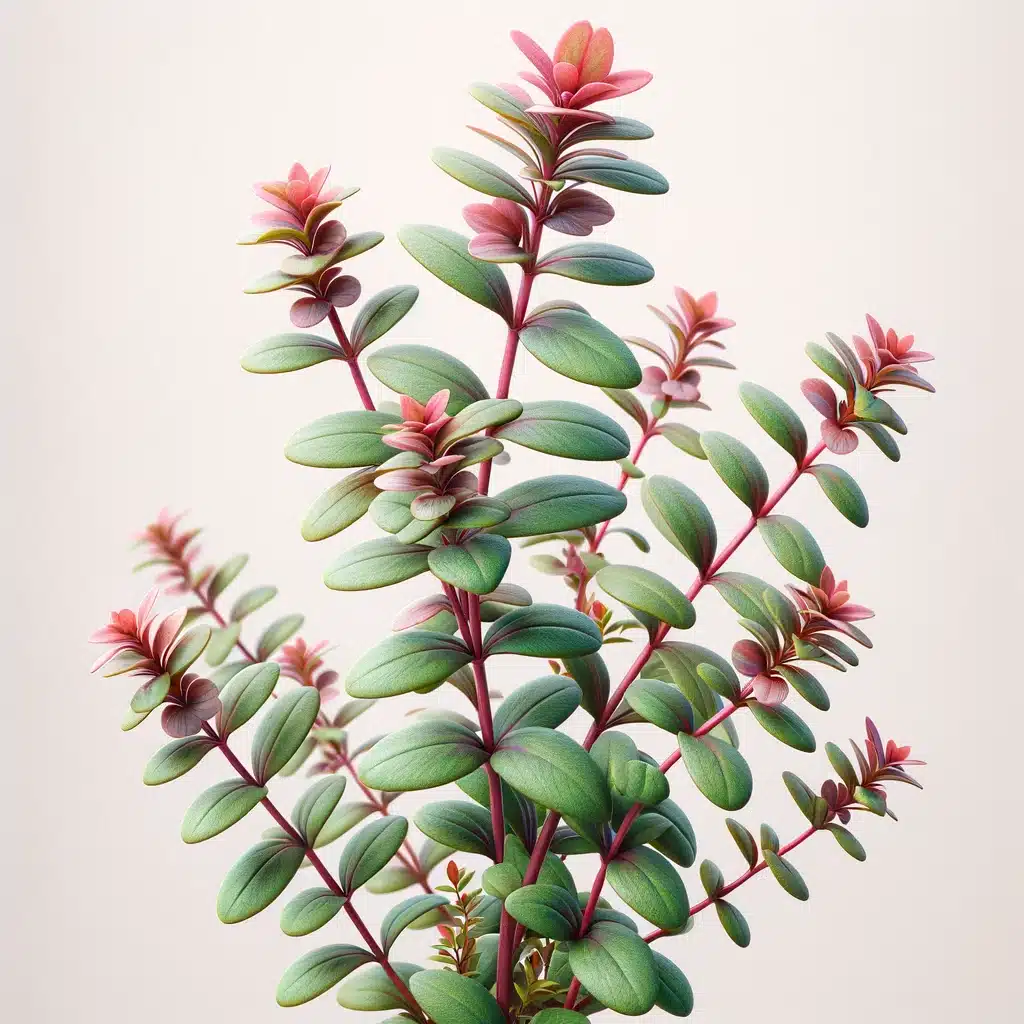
Pygmy Chain Sword–
Helanthium tenellum have narrow elliptical leaves, the stem is thin and erect approximately of a height of 3-20 cm. Since it is a fast- growing plant it is observed as runners.
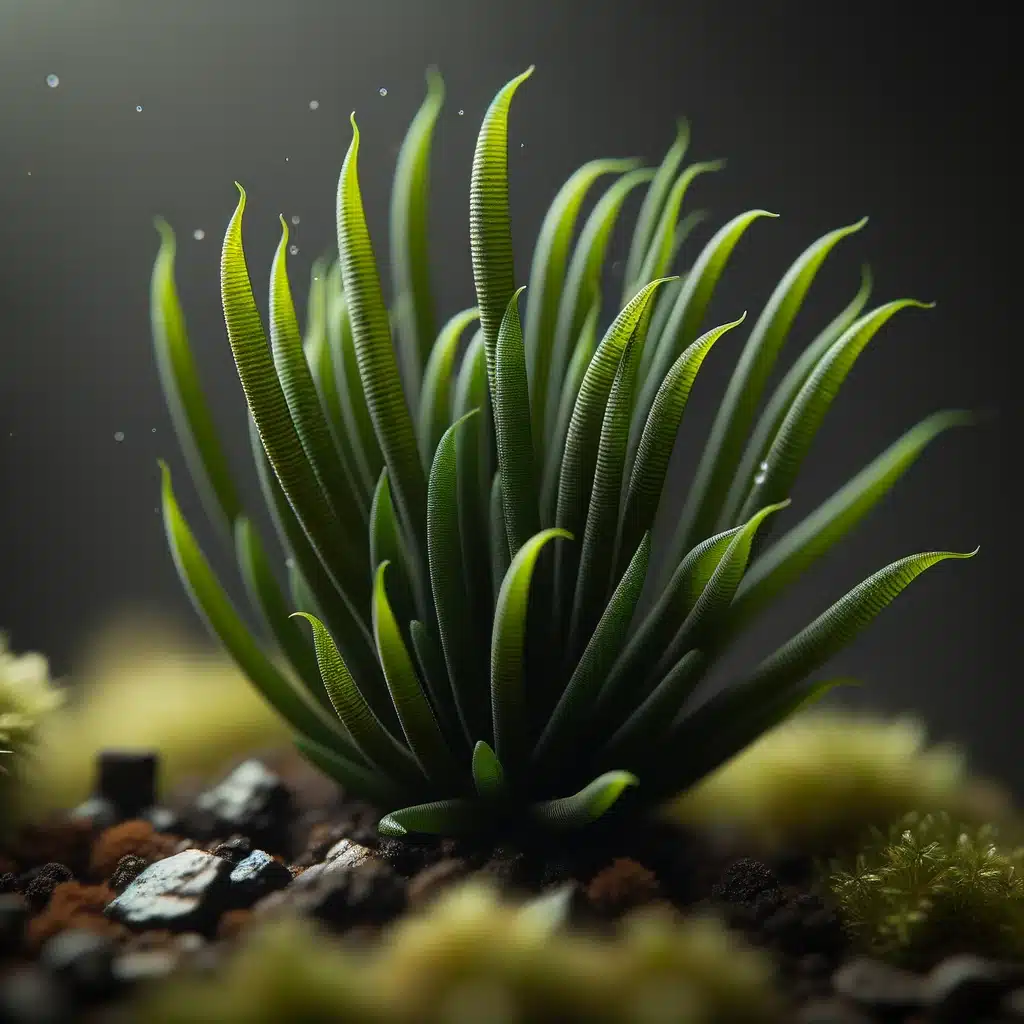
Indian Waterweed–
It is one of the popular tropical aquarium shrubs. The leaves tend to become pink or orange shade when they come in contact with the sunlight. It is used for medication for our country.
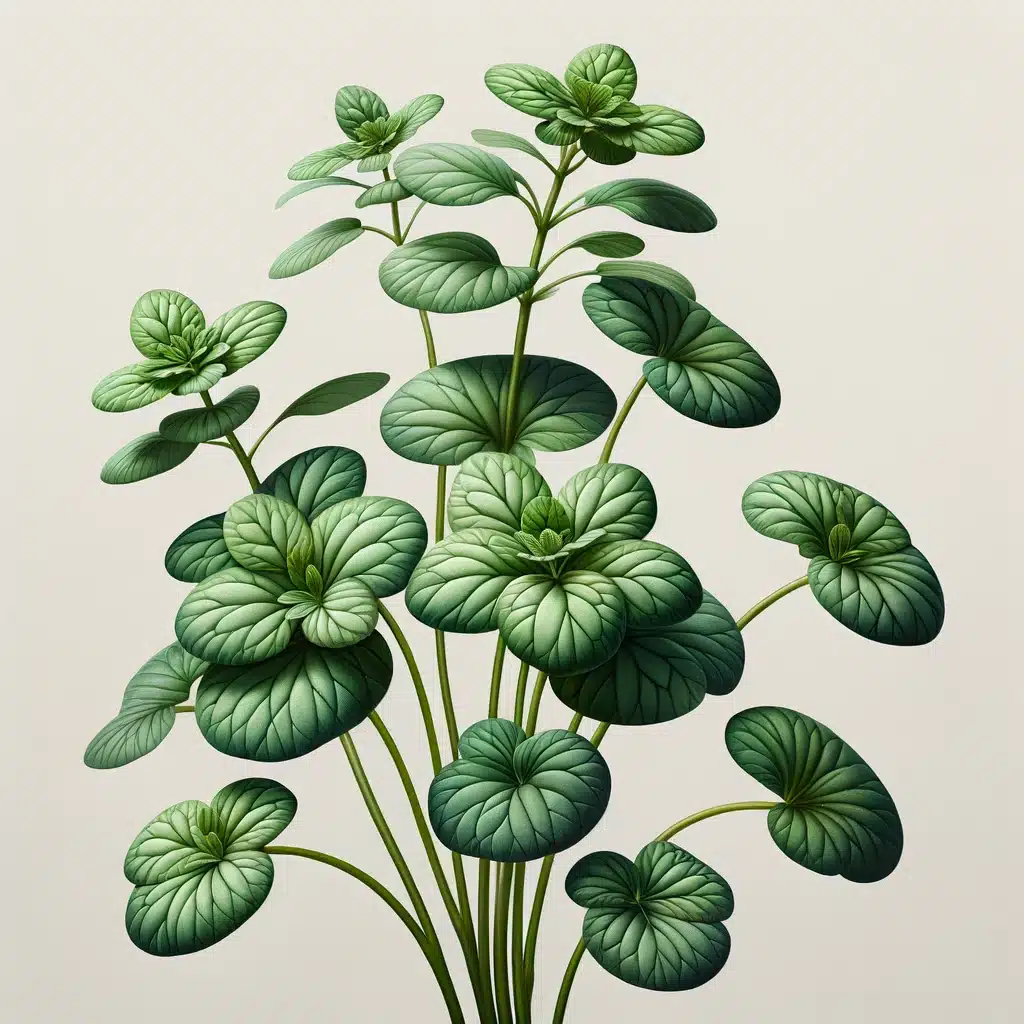
Crytopcoryne Wendtii–
It is a species of aquatic herb widely used for the aquarium, native in Sri Lanka. Two types are present, “tropica” and “mi oya”. The latter is named after the river in Sri Lanka. It can grow in low and high light environments.
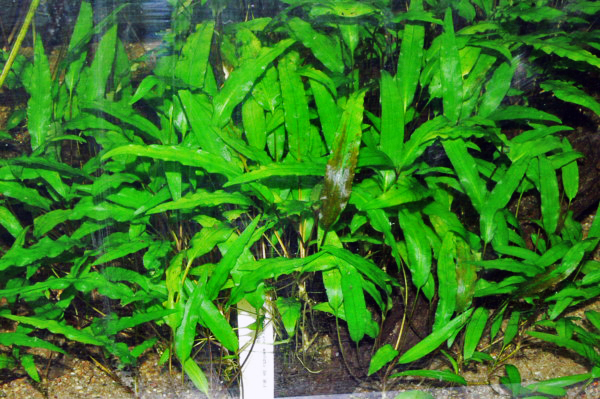
Anubia Nana–
It is a short aquatic plant with broad leaves. The green colour makes it attractive and it helps to keep the water clean and oxygenated.
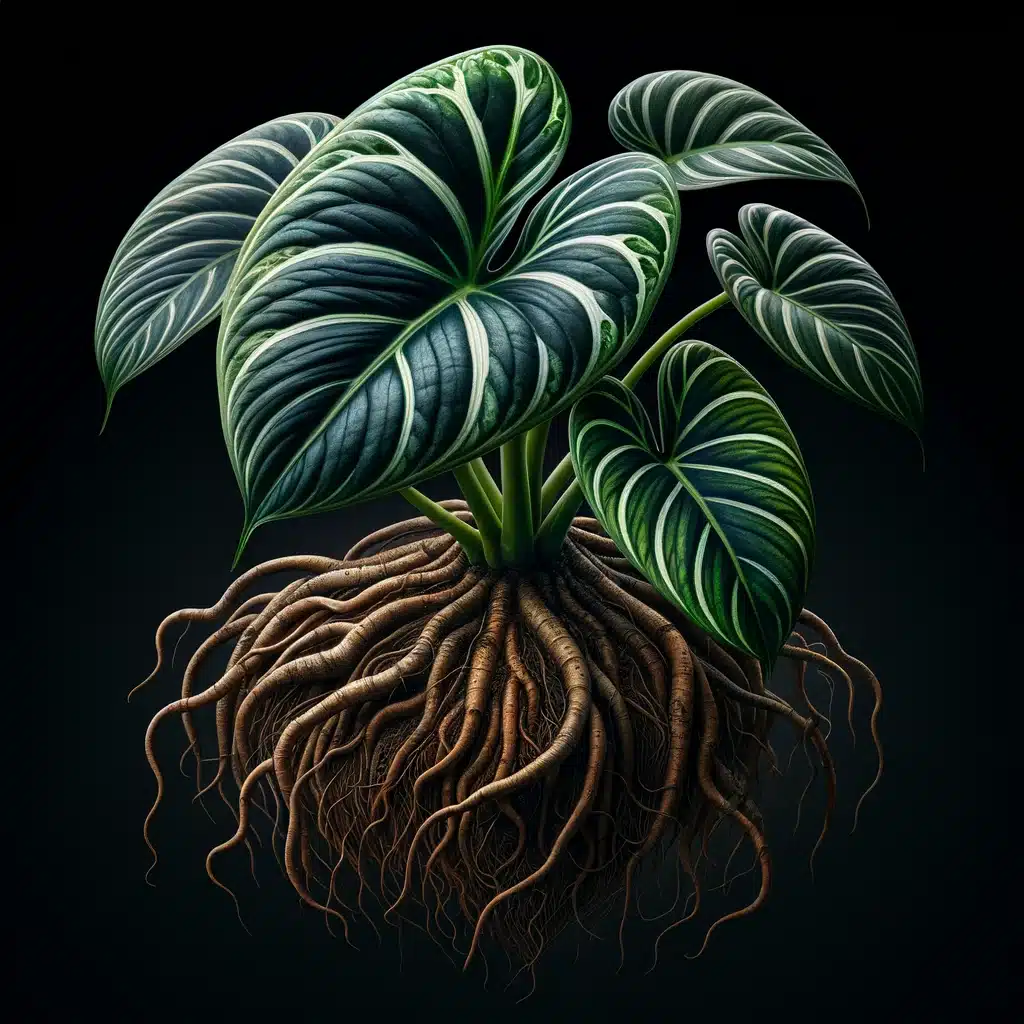
Java Fern–
Leptochilus pteropus is an aquatic variable plant originating from Indonesian island of Java. According to different geographic locations, morphology of the plant changes. It is the most popular plant to be used as an aquarium plant for its aesthetic appeal.
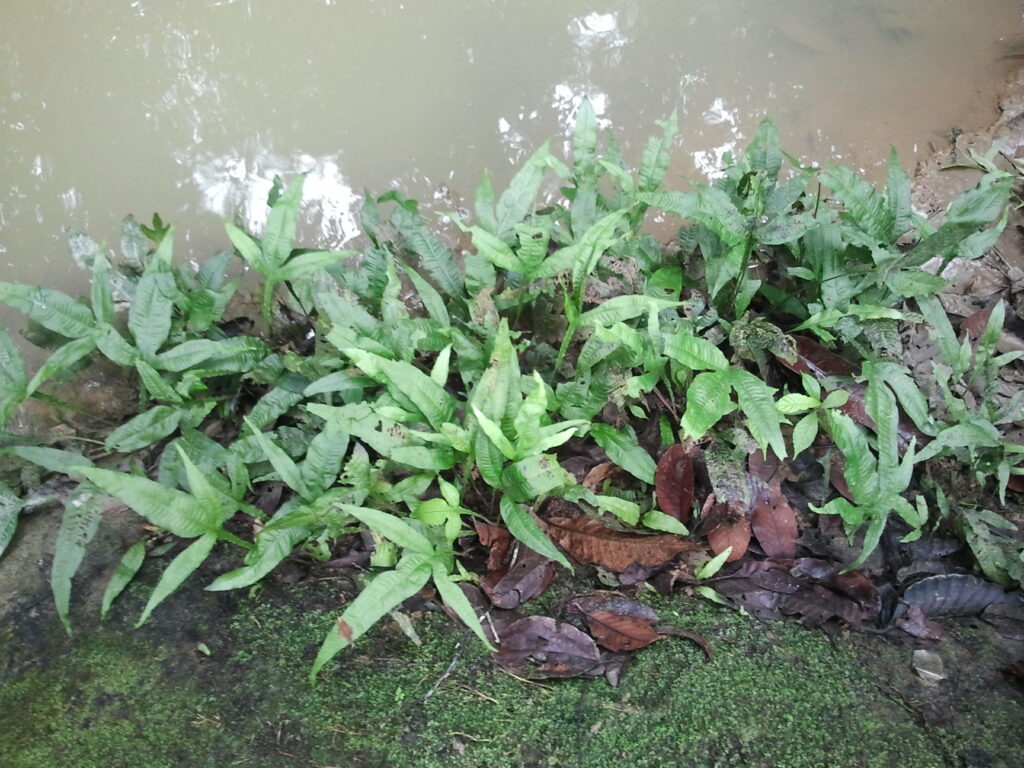
Amazon Sword–
Echinodorus grisebachii is cultivated and used for ponds and artificial aquatic habitats. It has submergent leaves 40-60 cm long attached by petioles. The leaf blades are narrowly oval.
Java Moss–
Taxiphyllum barbieri known as Java moss belongs to family Hypnaceae. It is commonly used in freshwater aquariums, attached to rocks, roots, and driftwood. It forms loose cushions of irregularly arranged branches. It is found in the wild forests of Vietnam. Most extensive use of aquarium trade.
Creeping Jenny Pond Plants–
Lysimachia nummularia is a species of daisy family, Primulaceae. Its common names are moneywort, creeping jenny, herb twopence grass. The height of this plant grows upto 2 metres and spreads rapidly. It has rounded leaves, has cup shaped flowers, 2 cm in diameter. Its found in damp and wet areas. It is often used as groundcover or as an accent plant in containers.
Pickerel Plant–
Pontederia cordata is a monocotyledonous aquatic plant native to America. It grows in variety of wetlands, ponds etc.The stretches of land where it is found from eastern Canada south to Argentina. The leafstalks can be eaten raw and has various health benefits. This plant is cultivated as an ornamental garden pond plant and has gained the Royal Horticultural Society’s Award of Merit.
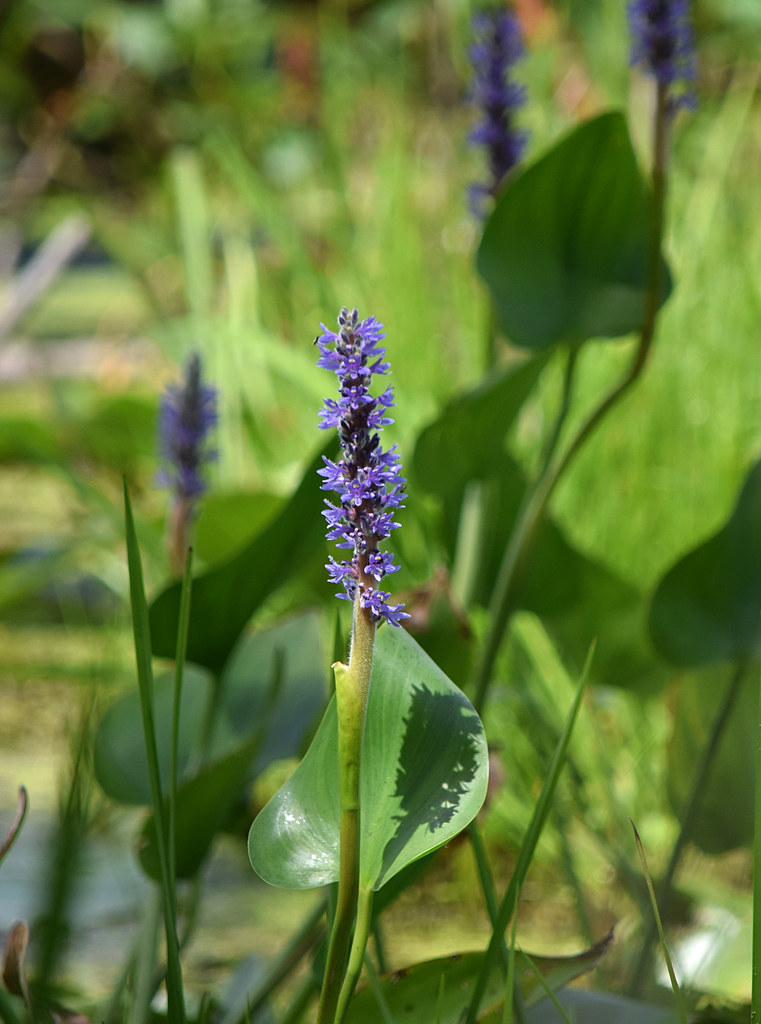
Frequently Asked Questions-
What are Aquatic Plants?
Aquatic plants are plants that have adapted to love in aquatic conditions which gets rooted either in mud and anchors in the water bed. They mainly grows and blooms in swampy areas. Another name of aquatic plants are machrophyte.
Q: What are pond plants?
A: Pond plants are plants that live in or around bodies of water, such as ponds or lakes.
Q: What are water lilies?
A: Water lilies are a type of aquatic plant with large, floating leaves and vibrant flowers.
Q: What is water hyacinth?
A: Water hyacinth is a fast-growing aquatic plant that floats on the water surface and has beautiful lavender flowers.
Q: What are native plants?
A: Native plants are plants that naturally occur in a specific region or ecosystem.
Q: What is pickerelweed?
A: Pickerelweed is an emergent plant with long, lance-shaped leaves and spikes of purple-blue flowers.
Q: What are invasive aquatic plants?
A: Invasive species of aquatic plants are non-native plants that have negative impacts on native ecosystems.
Q: What are submerged plants?
A: Submerged plants are aquatic plants that are rooted in the sediment but live entirely submerged in water.
Q: What are floating plants?
A: Floating plants are aquatic plants that float on the water surface and do not have roots anchored in the sediment.
Q: What are bog plants?
A: Bog plants are plants that grow in boggy, marshy areas with acidic soil and high water content.
Q: What are some examples of aquatic plants?
A: Some examples of aquatic plants include water lilies, water hyacinth, elodea, pickerelweed, and submerged aquatic weeds. ###
Also Read:
- Generalist species examples
- Chromatin vs chromatid
- Cytoskeleton structure
- Do plant cells have centrioles
- Calcareous sponge types
- Is diffusion passive
- Chloroplast growth
- Hard fruit example
- Horseshoe crab example
- Where does bacteria live
Hi..I am Sutanaya Banerjee, I have completed my Master’s in Biotechnology. I always like to explore new areas in the field of Biotechnology.
Apart from this, I like to read and travel.